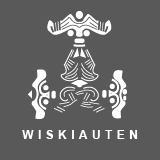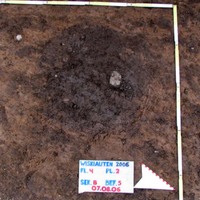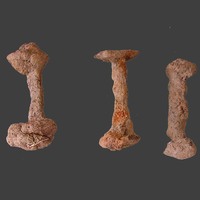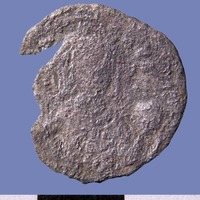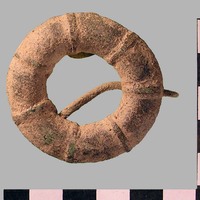Area 4
-
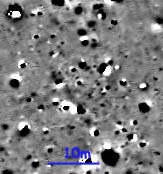
- Geomagnetical anomaly in area 4: possibly traces of a scandinavian post house
Area 4 with an extent of 10 x 10 m was established to check a suspicious structure in the geomagnetical images which reminded of the ground plan of scandinavian post houses (see pic. right). In this little area indeed there could be documentated traces of 60 posts (see pic. 1).
In the postholes were discovered fragments of bones and pottery. Beside of the posts the excavation let to the discovering of two small stone settings which were rich in finds. Their function still is unclear, but they might be interpreted as working places or as waste deposits. Between the stones were found pottery sherds, animal bones, amber fragments, bronce rests and iron objects, among them a number of ship nails (see pic. 2) which lead to the conclusion that scandinavian ship constructions were used in Wiskiauten but in this case might originate from wrecked ships which were reused to built houses.
Unfortunatly the excavated area is too small to point out ground plans or even distinguish different phases of construction. The final analysis of the excavation results will be continued in the Archeological Museum of Schleswig probably. So far it can be resumed that post houses have existed within the settlement structures of Wiskiauten even if the geomagentical images do not correspond with the position of the excavated features. Obviously the limit of geomagnetical measuring in this case of the very small posts with sometimes less than 15 cm diameter is already reached.
A byzantine silver coin out of area 4 of the late 11th cent. A.D., which because of its bad condition so far was not determind exactly, can be seen as evidence of a long distance trading connection of Wiskiauten. A ring brooche of the so called Curonian type, the pottery sherds and the coin allow a preliminary dating of the excavated structures into the second half of the 11th cent. or the beginning of the 12th cent. A.D.
[top]
